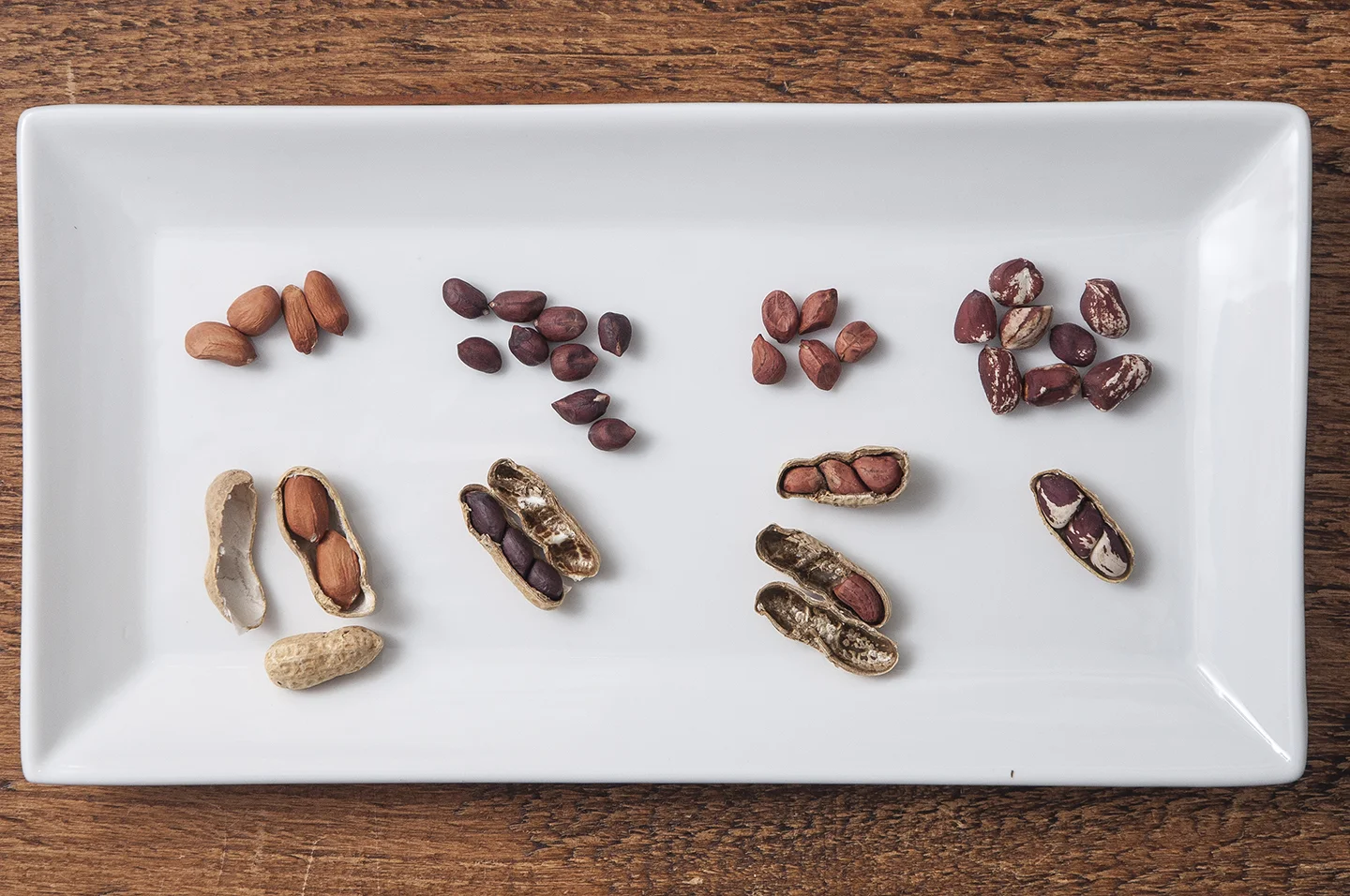The Seed Garden: A New Seed Saving Guide
/The Seed Garden: The Art and Practice of Seed Saving is now available! With over 300 color photographs, simple lessons, master classes, and over 75 crop profiles, this long-awaited resource is sure to provide guidance for new and seasoned seed savers. Here's a reminder of what's inside. Don't forget to order your copy!
Over 300 color photographs (Like this one, illustrating diversity among peanut varieties) illuminate this exceptional new resource from Seed Savers Exchange and ORganic Seed Alliance.
Over the last four years, Seed Savers Exchange and the Organic Seed Alliance have written and edited a foundational text for the backyard seed saver. The Seed Garden: The Art and Practice of Seed Saving, will be available at the start of next year’s growing season.
In anticipation of its upcoming publication in spring of 2015, I sat down with John Torgrimson, Executive Director of Seed Savers Exchange and publisher of the book, to learn more about The Seed Garden.
TC: Why is this book important?
Complex tasks, like hand pollinating squash, are broken down into step-by-step guides for more advanced seed savers.
John: At Seed Savers Exchange, we feel that an important part of our job is to provide information to people and give them skills they need to save seed. We think that saving seed is essential to maintaining genetic diversity and that everyone who grows heirloom, open-pollinated seeds in their backyard and saves them are part of this effort at participatory conservation. There’s no better way to maintain diversity than by saving seeds and starting your own collection, and, over time, those seeds will become adapted to your growing conditions and your situation. To me, as a gardener who has gardened for a long time, it completes the circle between myself and everyone who came before me who took the effort to save seeds.
TC: Who is the audience of The Seed Garden? Gardeners? Market farmers? Plant breeders?
John: It’s really for everyone, but the narrative is written toward the beginner. It’s designed in a way that we think is going to appeal to a really broad audience. I can see universities using the book in horticulture classes and I can also see individuals dog-earring it as they learn more and more about seed saving.The images will document the entire processes of saving seeds. We felt that the design of the book was really important. We want the book to invite the reader in to explore seed saving.
TC: Seed Savers Exchange started working on The Seed Garden: The Art and Practice of Seed Saving over four years ago. Could you say a few words about the genesis of this project?
The Seed Garden is an Easy-to-Navigate resource for everything from plant biology to proper techniques.
John: We wanted to build on the success of Seed to Seed, by Suzanne Ashworth, which had been the standard how-to-save-seeds book published by Seed Savers Exchange. The second edition came out in 2002, and SSE’s board of directors felt that it was time to create a new seed saving book targeted at the next generation of seed savers. The idea was that this book would be written with the backyard gardener and beginning seed saver in mind.
The first section of the book is about the biology of seed saving, dealing with issues like isolation and population – the science of seed saving. The second section of the book gets into individual crop types. These crop-specific guides - more than 75 - engage the reader in a way that allows them to gather information quickly and easily. We envision the reader using this text in different ways; the more advanced seed saver can go to the master classes where they can find details about more complex seed saving techniques, while beginners might want to jump to particular varieties that they’re interested in collecting and saving seeds from.
We also wanted to fill in some of the technical gaps that many recent seed saving books do not focus on, and give gardeners the skills they need to develop best practices for saving seeds.
TC: Is there any advice that you would give to people who are interested in picking up this book and saving their own seeds?
John: I would say that you should start with things you like. And start with things that are relatively easy and don’t require a lot of complex steps. Things like beans and peas and tomatoes don’t cross very easily. I would encourage people to start saving tomato seeds from a tomato that they really like. You know, tomatoes are the gateway drug to gardening - and possibly seed saving. So, pick a tomato that you like and make it your own.
This is the year to discover a new passion, take up a new hobby, and learn a valuable new skill with The Seed Garden. With lessons for every level of garden skills, you'll be sure to enjoy your time saving seeds.
The Seed Garden is shipping now!
Seed Savers Exchange is a non-profit organization located in Decorah, Iowa, with a mission to conserve and promote America's culturally diverse but endangered garden and food crop heritage for future generations by collecting, growing, and sharing heirloom seeds and plants.














